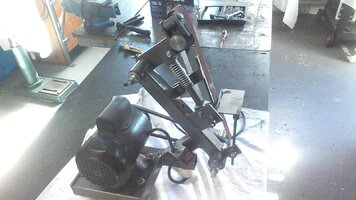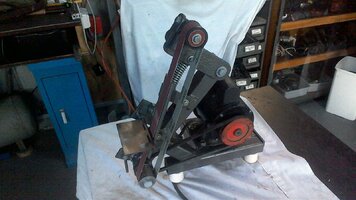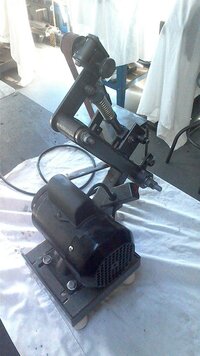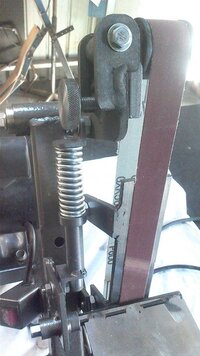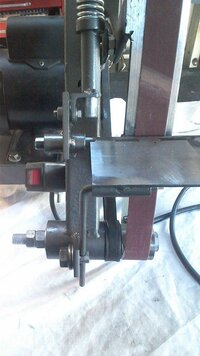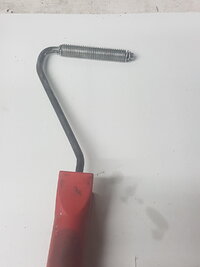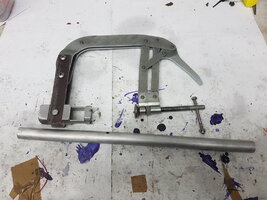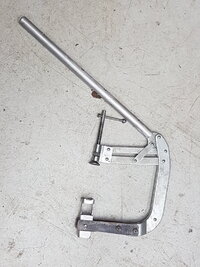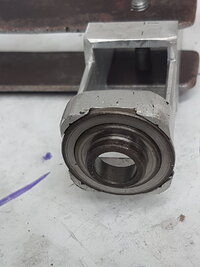Not strictly bike related, but, I decided I needed a little brother to my bigger belt sander. Originally I made it to take two belts, but found the motor I used didn't have enough power to run two belts, so I re made it for just the one. One day, if I ever find a bigger motor, I'll convert it to a twin belt. Saves mucking around changing belts all the time. I chose this size belt because the belts are available in an almost unlimited variety of grits.
Hardest bit was getting all the wires inside the switch housing. After all that work though, it hardly ever gets used. More of a shop ornament I suppose.
Hardest bit was getting all the wires inside the switch housing. After all that work though, it hardly ever gets used. More of a shop ornament I suppose.

